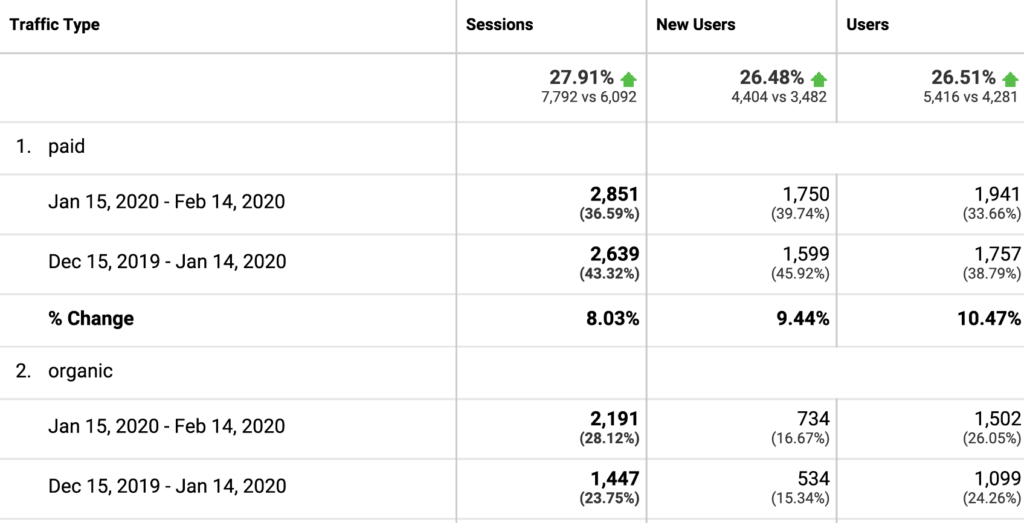When a person engages with your website, you’d hope that they’ll come back to make a purchase or entrust you with your services. However, the buyer’s journey may not always be that simple. Oftentimes, they might have errands or tasks to do that get in the way and ultimately their decision to engage with your offer will be on the back burner of their minds.
However, online marketing experts have found a way to trace these potential consumers and remind them about the offer that they missed. They do this through a strategy called “Retargeting.”
What Is Retargeting?
It is a form of online advertising that helps you keep your brand in front of bounced traffic after they exit your site. Typically, only 2% of users become conversions when they first visit a website. However, with retargeting, companies can potentially reach the other 98% by having your ads follow your customers in the right places.
What’s the Difference Between Retargeting and Remarketing?
Oftentimes, people interchangeably use remarketing and retargeting, however, they’re not exactly the same. Retargeting is a displayed ad presented to users who came to your website but left without taking the next step on your offer. On the other hand, remarketing is reaching out to lost clients or customers through email, so you need to collect your customer’s contact information first.
Although remarketing might have similarities with one strategy of retargeting, we will define later on in the article the difference between the two.
How Does Retargeting Work?
Have you ever noticed that when you first visit an airline’s website so you can book a ticket for your trip, advertisements of the airlines appear on your Facebook timeline and other websites that talk about travel afterward?
This is because of your airline company making use of retargeting ads to persuade you to make another purchase.
Companies check their website through Google Analytics to see if they have any new users that came into their website. If these new visitors were unable to engage with their products or services, this is where they use retargeting ads to lure them back in.
For example, you see on the chart below one of our site usage reports from one of our clients. On the new users’ column for both paid and organic searches, you see that there are 1,750 new users and 734 new users respectively. Knowing that there are already this amount of people who have viewed the website, we take advantage of retargeted ads to remind them of our client’s offer and bring them back to the website.

There are two ways to go about it, either through a retargeting pixel or a retargeting list.
Using a Retargeting Pixel
One of the most common ways of retargeting is making use of “cookies,” which is a small piece of data that is stored by the Web browser when they visit your website. Once they leave and go to other websites, the cookie data notifies various retargeting platforms to present your specific ads based on the pages they visited on your site.
This strategy of retargeting is more behavior-based and specific to a certain page on your website. However, the disadvantage of this strategy is if there are only a few people visiting your website, entering a certain page, and leaving, you will only expect a few people to see your ads. Also, it takes time to implement the JavaScript on various pages on your website.
Using a Retargeting List
On the other hand, you can also use retargeting ads by acquiring a person’s contact information through your lead magnet. When users sign in to avail of your offer, you will have a list of contacts on your database.
With this, you can upload a list of email addresses on a platform where you can run your retargeting campaign, typically these are social media websites like Twitter or Facebook. From there, the platform will search for users who have the addresses you’ve uploaded and present the ads on their timeline.
Although this strategy may be similar to remarketing as you have to get the email address of your potential consumer to get them to see your ad, in the case of a retargeting list, your ad is displayed on the platform you want to run the marketing campaign while remarketing directly sends an email to the potential consumer about your offer.
Through this retargeting strategy, there are customizable criteria for your ads, meaning you can choose which user can see this specific ad. However, the disadvantage of using a person’s contact information as a way to retarget these ads is if they used a separate email for their social media account. Hence, they won’t get to see your ads.
What Are the Benefits of Retargeting?
You might be considering retargeting as part of your online marketing strategy among the many options you can use to promote your law firm. But what truly makes it appealing to online marketers? Here are the numerous benefits you get when engaging in retargeting marketing:
- You can reach interested consumers
Like the example provided earlier about the airline website, you have customers who are already interested in your service. With retargeting, you’re simply reminding them and giving them the push they need to move on to the next step, which is the purchase. As retargeting can either depend on the user’s behavior or customized criteria, then you can guarantee that your ad will reach interested prospects rather than those who are only likely to be interested in it.
- It’s one of the most cost-effective ways to increase brand awareness
With the right online marketing strategy, retargeting can help you generate more leads on your website, helping your law firm gain more brand awareness online. Statistics by Wishpond stated that the click-through rate of a retargeted ad is 10x higher than the CTR of a display ad.
Also, according to Criteo, 43% of website visitors are more likely to convert due to retargeting ads. So, if you’re looking for a way to get more prospects to know about your law firm, scratch the traditional media options that cost a lot but with very little return on investment. Have your ads on appropriate websites where you can reach your specific target audience instead.
- You can generate more revenue
As your traffic is more likely to increase due to retargeting ads, you can also expect more potential clients to go to your website to know more about your offer, take the next step, and convert into a potential client. Of course, retargeted ads is simply a bait in getting your consumers to your website. What you need to do is give them a compelling offer that they find valuable, so you can get them to convert.
Retargeting takes a lot of time, effort, and practice to get right, so you can ensure that you really get a return on your investment. With that being said, if you want to focus on your operations while still having leverage in terms of online marketing for your law firm, why not partner with a digital marketing company who can help you get more traffic, more people in your client list, and more revenue.
How Binary Ideas Can Help You with Your Retargeting Ads
Binary Ideas has a team of professionals who can help you come up with an effective online marketing campaign that will increase your law firm’s brand awareness and ultimately get more people to entrust you with their cases. We have up-to-date know-how on the best retargeting practices and the appropriate marketing strategies that will increase your website’s traffic and overall gain more conversion.
If you want to know more about the services we offer, feel free to request a consultation with us today.








